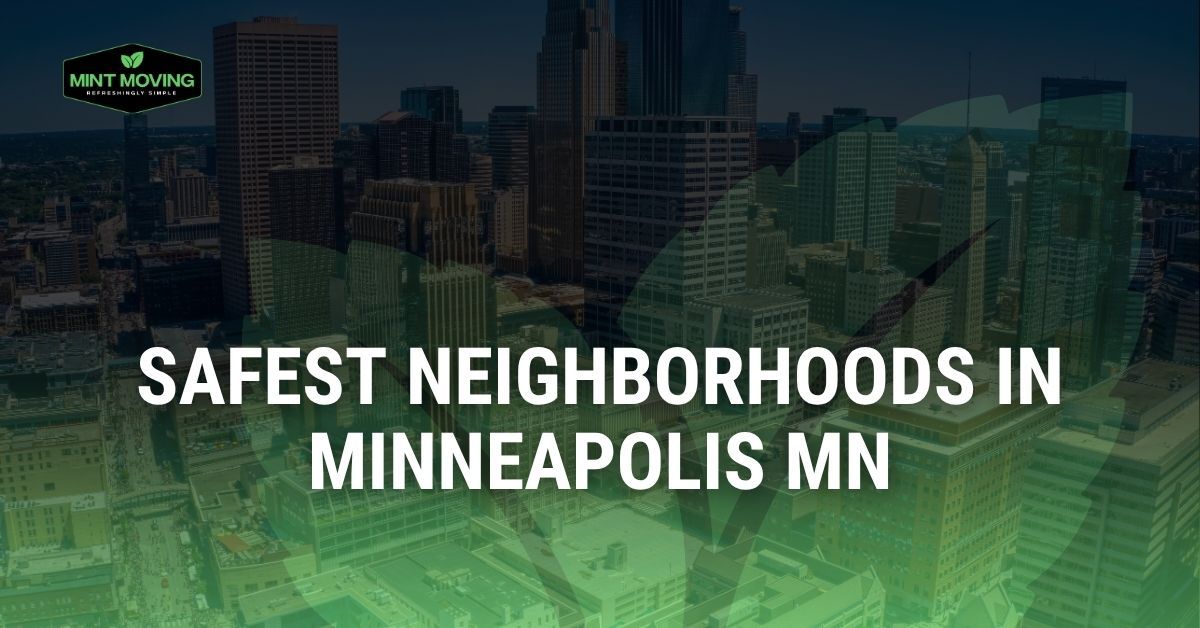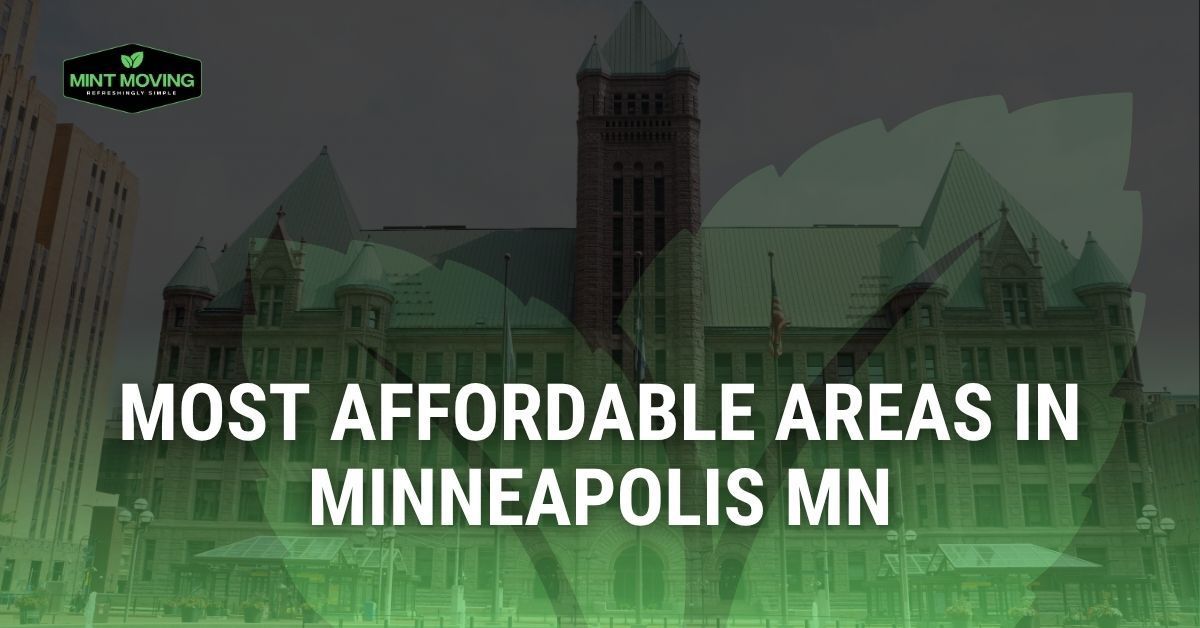Best Family Neighborhoods in Minneapolis, MN
Why Minneapolis MN Neighborhoods for Families Matter
We know that choosing where to raise your children shapes their entire childhood experience—from the friends they'll make at Pershing Park to the teachers who'll inspire them at Burroughs Elementary. Finding the right family neighborhoods Minneapolis MN isn't just about good schools and safe streets; it's about discovering communities where your kids can bike to Sebastian Joe's for ice cream, join youth soccer at Armatage Park, and grow up with the Chain of Lakes as their backyard. As Mint Moving has helped hundreds of families relocate across Minneapolis, we've learned exactly which kid friendly areas Minneapolis MN offer the perfect blend of education, recreation, and community that families need to thrive.
This comprehensive guide to the best family-friendly neighborhoods Minneapolis explores each area's unique advantages for raising children. You'll discover why families choose Fulton for its proximity to Lake Harriet, how Kenny neighborhood's walkability to both elementary and high school creates rare convenience, and which neighborhoods with good schools Minneapolis MN also offer affordable housing options. Whether you're seeking kid-friendly Minneapolis MN neighborhoods with extensive park programs or quiet streets where children play until dusk, this guide provides the detailed insights you need.
Linden Hills: The Complete Family Package
Linden Hills stands as Minneapolis's quintessential family neighborhood, where children grow up knowing every dog on their block and parents coordinate carpools to Washburn High School. This Southwest Minneapolis enclave centered around 43rd and France offers what many consider the top neighborhoods for kids Minneapolis MN.
Kenny Elementary School anchors the educational experience, with 560 students enjoying test scores that consistently exceed state averages. The Spanish dual-immersion program draws families citywide, while the general education curriculum uses Lake Harriet as an outdoor classroom. Parents actively support the school through a PTA that raises over $100,000 annually, funding everything from smart boards to visiting authors. After school, kids flood Wild Rumpus bookstore where chickens roam freely, or head to Sebastian Joe's for their famous Pavarotti ice cream.
The recreational opportunities seem endless for Linden Hills families. Lake Harriet's beaches offer swimming lessons through Minneapolis Parks, while the bandshell hosts free concerts where toddlers dance and teenagers hang with friends. Linden Hills Park at 3100 West 43rd Street features newly renovated playgrounds, tennis courts, and winter skating rinks. Youth sports leagues thrive here, from Linden Hills Baseball Association to Southwest Soccer, creating community bonds that last decades.
Housing reflects this desirability, with family homes ranging from $600,000 for smaller bungalows to $1.5 million for lakefront properties. The investment pays dividends through neighborhood stability—many families stay for generations, creating the continuity that builds strong communities.
For an in-depth exploration of this premier family area, read our Living in Linden Hills: Complete Guide.
Fulton: Affordable Excellence Near the Lakes
Fulton neighborhood offers families a more accessible entry point to Southwest Minneapolis living while maintaining excellent schools and lake access. Bounded by West 50th Street, France Avenue, Lake Harriet, and Penn Avenue, Fulton provides the best areas for families Minneapolis MN seeking value without sacrificing quality.
Armatage Elementary School serves Fulton families with strong academics and an environmental focus that includes gardens and composting programs. The school's 450 students benefit from an active parent community and partnerships with nearby Armatage Park. Most Fulton students continue to Ramsey Middle School's International Baccalaureate program before attending Southwest High School, one of Minnesota's top-ranked public high schools with its planetarium and extensive Advanced Placement offerings.
Fulton's housing market offers better value than neighboring Linden Hills, with family homes typically ranging from $450,000 to $700,000. The neighborhood features solid post-war ramblers and Cape Cods with finished basements perfect for playrooms. Streets like Washburn Avenue and Vincent Avenue showcase well-maintained homes with mature trees providing shade for sidewalk chalk art and lemonade stands.
Family life centers around Armatage Park's 26 acres, featuring baseball diamonds, soccer fields, tennis courts, and an excellent recreation center offering youth programs from toddler gymnastics to teen leadership clubs. The wading pool draws crowds on hot summer days, while the warming house keeps hot chocolate flowing during hockey season. Nearby Lake Harriet provides additional recreation, with many Fulton families maintaining boats at the Lake Harriet Yacht Club.
Kenny: The Hidden Gem of Southwest
The Kenny neighborhood, often overlooked between Linden Hills and Armatage, delivers exceptional family living for those who discover it. This compact area bounded by 54th Street, Logan Avenue, Minnehaha Creek, and Lyndale Avenue offers some of the most family-friendly communities Minneapolis.
Kenny Elementary School serves both Kenny and Linden Hills neighborhoods, meaning Kenny residents enjoy the same excellent education at slightly lower housing costs. The school's location at 5720 Emerson Avenue makes it walkable for most Kenny families, rare convenience in car-dependent suburbs. Washburn High School sits just across Minnehaha Creek, allowing teenagers to walk or bike to school—a freedom that builds independence.
Housing in Kenny trends more affordable than Linden Hills, with typical family homes ranging from $475,000 to $650,000. The neighborhood features charming 1950s ramblers and occasional new construction where teardowns occurred. Streets like Drew Avenue and Colfax Avenue offer the kind of quiet, tree-lined setting where kids still play street hockey and neighbors share garden vegetables.
Minnehaha Creek Parkway forms Kenny's southern border, providing incredible recreational access. Families fish for bass below the 54th Street bridge, paddle kayaks through the creek corridor, and bike the parkway to Lake Harriet or all the way to Minnehaha Falls. Kenny Park might be small, but its playground gets constant use from neighborhood families who appreciate having a gathering spot within walking distance.
St. Anthony: Northeast's Family-Friendly Secret
St. Anthony breaks the Southwest Minneapolis monopoly on safe neighborhoods for families Minneapolis MN, offering an alternative in Northeast with unique advantages. This area along the Mississippi River combines excellent schools, diverse housing, and authentic community character.
St. Anthony Village schools, though technically a separate district, serve many area families with outcomes rivaling Southwest Minneapolis. St. Anthony Village High School's 900 students enjoy small class sizes and personal attention impossible in larger districts. Families within Minneapolis boundaries might attend Webster Elementary or Northeast Middle School, both offering strong programs with more economic diversity than Southwest schools.
Housing diversity makes St. Anthony accessible to various family budgets. Single-family homes range from $350,000 starter houses to $600,000 updated properties near the river. The Legends of St. Anthony luxury condos offer a different family lifestyle with amenities and river views. Rental options include townhomes at St. Anthony Village Apartments and single-family homes throughout the neighborhood.
Recreational highlights include the Mississippi Riverfront trails perfect for family bike rides to Boom Island Park or Father Hennepin Bluff Park. Silverwood Park, though technically in St. Anthony Village, provides environmental education programs, canoe rentals, and a swimming beach. The neighborhood's authentic Northeast character means kids grow up experiencing diversity, from the Somali markets on Central Avenue to Polish sausages at Sentyrz Market.
Nokomis and Page: South Minneapolis Family Living
The Nokomis and Page neighborhoods surrounding Lake Nokomis offer family neighborhoods Minneapolis MN with strong community identity and recreational paradise. These adjacent areas provide more affordable alternatives to Southwest lakes neighborhoods while maintaining excellent quality of life.
Burroughs Elementary School serves both neighborhoods with particular strength in community building and inclusion. The school's 650 students reflect Minneapolis's diversity, with strong English Learner programs alongside general education. Lake Nokomis Community School offers a Montessori option, while Dowling Elementary's urban environmental learning program attracts families seeking alternative approaches. Most students continue to Sanford Middle School before attending South High School, known for its strong arts programs and diverse student body.
Lake Nokomis defines recreational life for area families. The main beach stays packed with families all summer, while the 50th Street beach offers a quieter alternative. Wheel Fun Rentals provides kayaks and paddleboards, while the fishing dock yields consistent panfish catches for patient young anglers. Winter brings the U.S. Pond Hockey Championships, turning the lake into a festival that celebrates Minnesota's hockey culture. The Grand Rounds trails circle the lake, perfect for teaching kids to bike or rollerblade safely.
Housing affordability attracts young families, with typical homes ranging from $375,000 to $550,000. The neighborhood features classic Minneapolis bungalows with potential for expansion, attracting families who value character over new construction. Streets like Nokomis Avenue and Page Street showcase the pride owners take in their properties, with Little Free Libraries and garden boulevards creating welcoming streetscapes.
For families evaluating safety alongside affordability, explore our guide to safest neighborhoods in Minneapolis, MN.
Lynnhurst: Southwest Comfort and Community
Lynnhurst delivers the Southwest Minneapolis experience at slightly lower prices than lakes-adjacent neighborhoods, making it increasingly popular with families. Bordered by 46th Street, Penn Avenue, 54th Street, and Lyndale Avenue, this kid friendly area Minneapolis MN combines excellent schools with strong community bonds.
Burroughs Elementary draws Lynnhurst families with its consistent academic excellence and welcoming community. The school's emphasis on environmental education includes maintained gardens and regular field trips to nearby Lake Harriet. Parents appreciate the walkability from most Lynnhurst homes and the before/after school programs that accommodate working families. Students typically continue to Anthony Middle School's International Baccalaureate program before attending Washburn High School.
The neighborhood's housing stock appeals to families seeking space and value, with homes typically priced between $475,000 and $750,000. Classic colonials and tudors line streets like Aldrich Avenue and Bryant Avenue, many featuring four bedrooms and finished basements perfect for growing families. The mature tree canopy creates tunnel-like streets in summer, providing shade for the sidewalk chalk art and hopscotch games that mark active family neighborhoods.
Lynnhurst Park anchors community recreation with baseball diamonds home to Southwest Athletic Association leagues, tennis courts offering summer lessons, and playgrounds recently updated through neighborhood fundraising. The recreation center programs range from preschool tumbling to teen gaming nights. Many families also utilize nearby Lake Harriet's amenities, just a short bike ride away.
Windom: South Minneapolis Value
Windom represents one of Minneapolis's best-kept secrets for families seeking affordability without sacrificing community quality. Located in South Minneapolis between Diamond Lake Road and Highway 62, Windom offers genuine neighborhood feel at accessible prices.
Windom Dual Immersion School provides Spanish-English education drawing families throughout Minneapolis. For traditional English instruction, families choose nearby Kenny or Armatage elementaries through school choice. Anthony Middle School serves the neighborhood with its strong International Baccalaureate program, while Washburn High School provides the complete Southwest secondary experience.
Housing affordability makes Windom attractive to first-time homebuying families, with typical homes ranging from $350,000 to $500,000. The neighborhood features solid ramblers and occasional split-levels, many with potential for expansion as families grow. Streets like Wentworth Avenue and Glenhurst Avenue showcase pride of ownership with maintained yards and children's toys indicating active family life.
Windom Park might be smaller than other neighborhood parks, but its programs punch above their weight. Youth baseball and soccer leagues thrive, the playground stays busy from dawn to dusk, and the community garden plots introduce children to growing their own food. The proximity to Pearl Park adds aquatic options with its pool and water features.
For families balancing multiple priorities, check our comparison guide Linden Hills vs Uptown: Comparison to understand neighborhood trade-offs.
Family Amenities Across Minneapolis
Beyond specific neighborhoods, certain amenities make Minneapolis exceptionally family-friendly. Understanding these resources helps families maximize their chosen neighborhood's potential.
Youth Sports Excellence: Minneapolis Park and Recreation Board coordinates leagues across all neighborhoods. Southwest Athletic Association dominates Southwest Minneapolis, while Northeast Youth Sports serves Northeast families. These organizations provide affordable access to baseball, soccer, basketball, and hockey, building skills and friendships that define childhoods.
Library System: Hennepin County Library's Minneapolis locations offer far more than books. The Walker Library hosts coding clubs for kids, Nokomis Library provides homework help, and the downtown Central Library's children's area rivals any children's museum. Summer reading programs keep kids engaged when school's out.
Healthcare Access: Children's Minnesota hospitals and clinics throughout the city ensure pediatric care is always close to home. The Minneapolis campus at 2525 Chicago Avenue provides specialty care, while neighborhood clinics like Uptown Pediatrics and Southdale Pediatrics handle routine needs. Park Nicollet's multiple locations ensure families find care within reasonable distance.
Cultural Education: The Minneapolis Institute of Art offers free family programs every weekend. The Walker Art Center's Free First Saturdays include art-making activities. The Bakken Museum teaches electricity and magnetism through hands-on exhibits. These resources enrich education beyond classroom walls.
Making Your Family Move to Minneapolis
Successfully relocating to family neighborhoods Minneapolis MN requires balancing multiple priorities—schools, housing costs, commute times, and community culture. The best family-friendly neighborhoods Minneapolis vary based on your specific needs, but this guide has highlighted options across different price points and city areas.
Whether you choose Linden Hills' lakeside perfection, St. Anthony's riverside diversity, or Windom's accessible value, Minneapolis offers exceptional environments for raising children. The city's commitment to parks, strong public schools, and family programming creates opportunities for childhood memories that last lifetimes. From Kenny Elementary's excellence to Lake Nokomis beaches, from Lynnhurst's tree-lined streets to Northeast's authentic culture, the top neighborhoods for kids Minneapolis MN each offer unique advantages.
When you're ready to join one of these family-friendly communities Minneapolis, professional moving support ensures your transition goes smoothly. Mint Moving understands the specific challenges of family relocations—from timing moves around school years to safely transporting everything from cribs to gaming systems. Our experienced teams know these neighborhoods intimately, from Kenny's quiet streets to St. Anthony's riverside complexity.
Ready to make your Minneapolis family move? Let Mint Moving handle the logistics while you focus on enrolling in schools, finding your pediatrician, and discovering which park will become your family's favorite. Contact us today to discuss your family's relocation needs with movers who understand what matters most when kids are involved.
For comprehensive Minneapolis insights beyond family considerations, explore our complete guide to moving to Minneapolis to understand the full picture of Twin Cities living.



